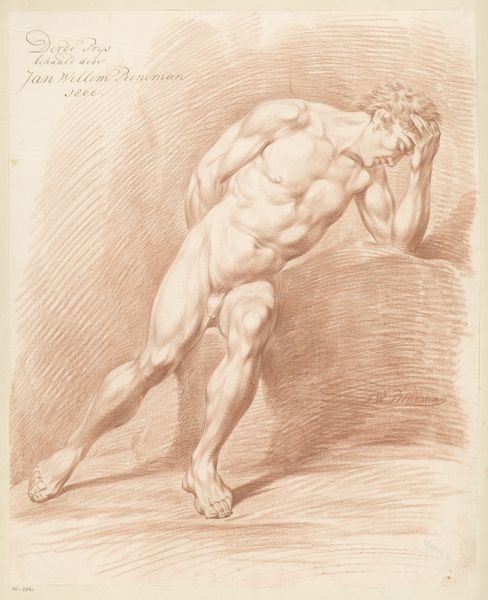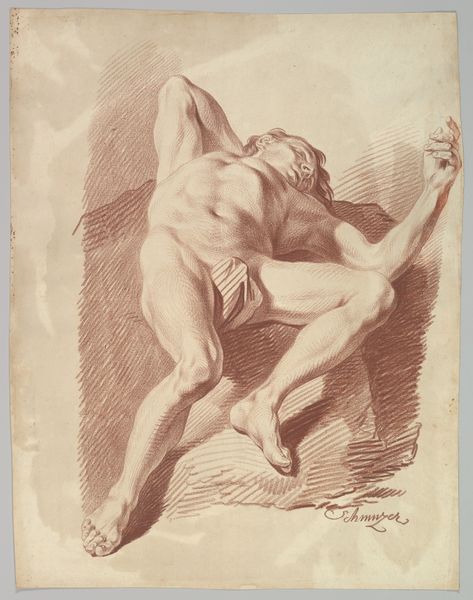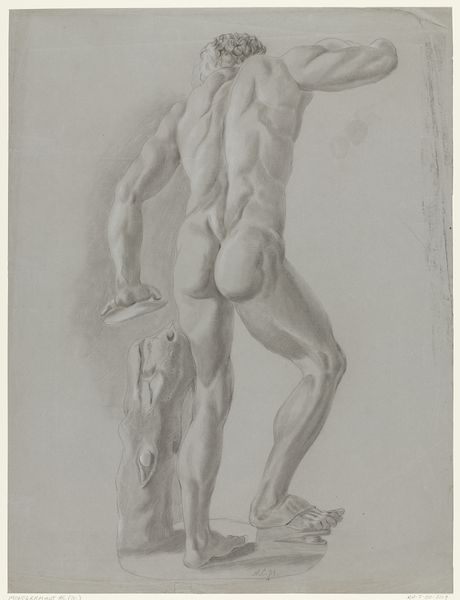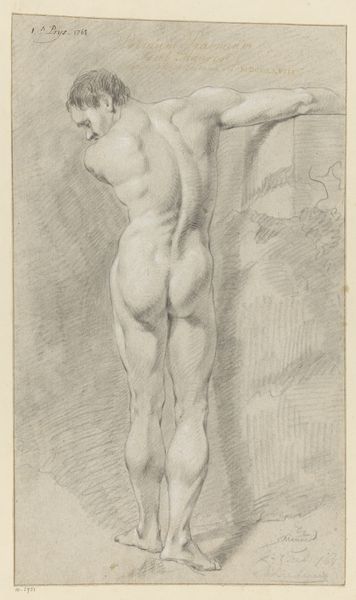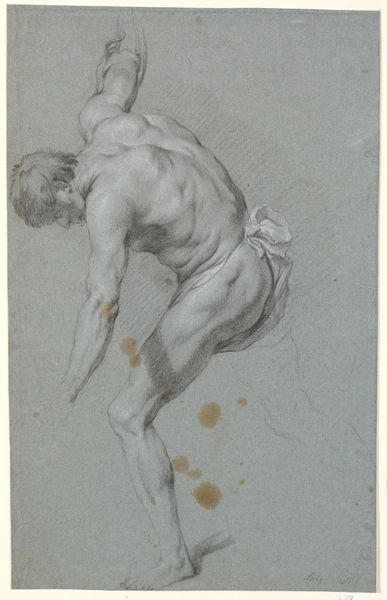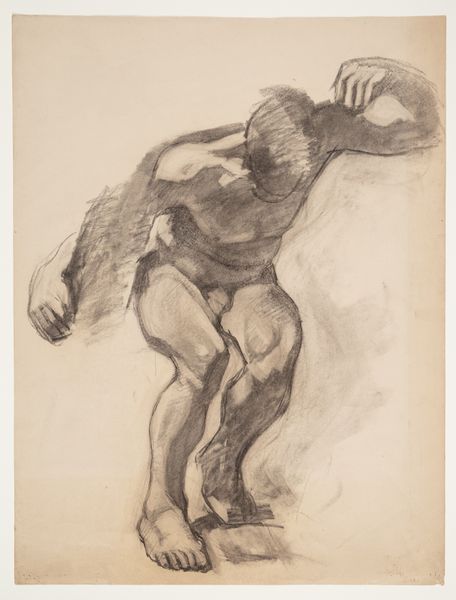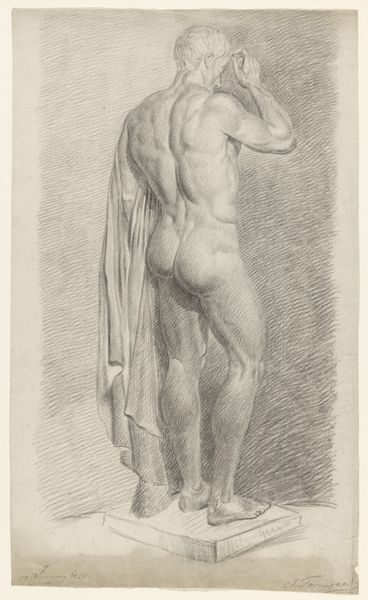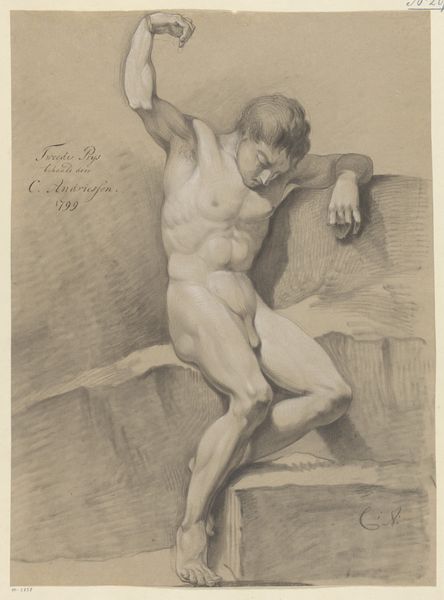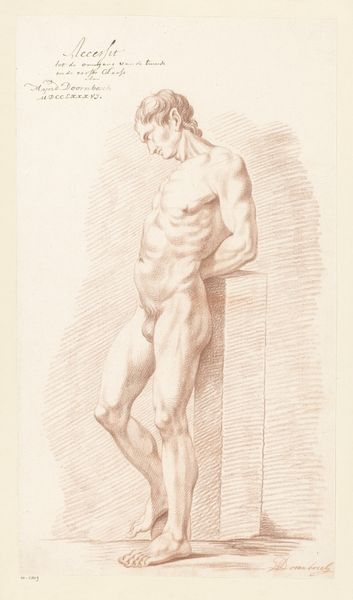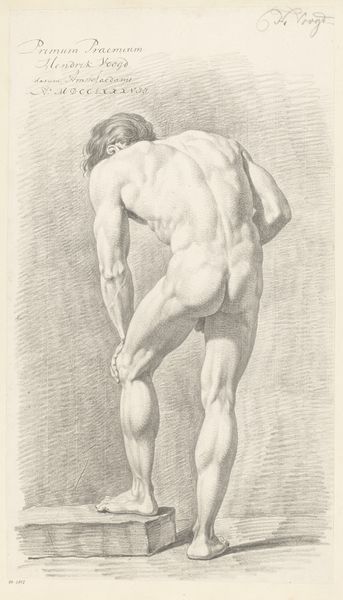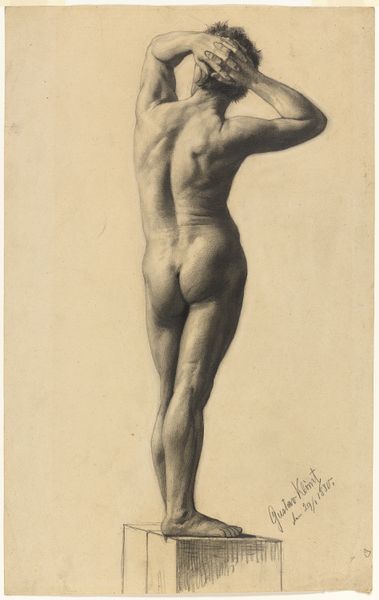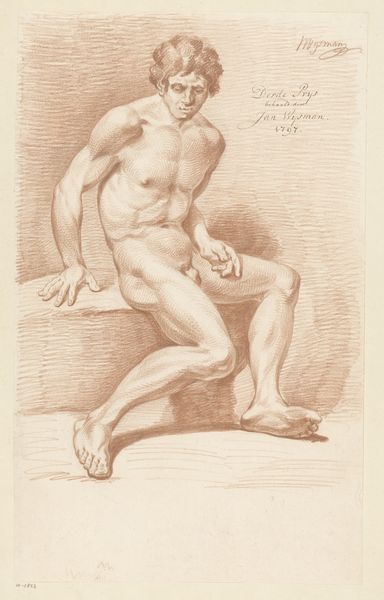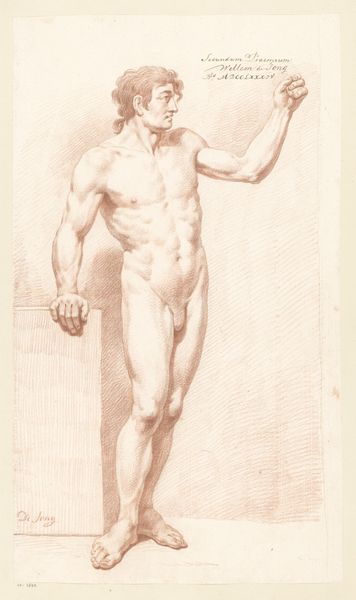
drawing, charcoal
#
drawing
#
classical-realism
#
charcoal drawing
#
figuration
#
pencil drawing
#
ancient-mediterranean
#
charcoal
#
history-painting
#
academic-art
#
nude
Dimensions: height 623 mm, width 463 mm
Copyright: Rijks Museum: Open Domain
Editor: This is "Bacchant," a charcoal drawing made sometime between 1800 and 1900 by Monogrammist AC (Jr.). The figure is so lifelike, almost breathing, but also feels strangely frozen, like a captured moment from an ancient frieze. What stands out to you about this work? Curator: The beauty here is layered with history, wouldn’t you agree? "Bacchant," instantly brings to mind ecstatic revelry, figures liberated from restraint in celebration of the wine god Bacchus, a memory preserved from ancient rituals through art like this. Editor: Absolutely, and I love how you link it to those ancient rituals. The circular objects in his hands--are those symbols connected to this revelry? Curator: Precisely. Those could be tambourines or cymbals – instruments associated with the frenzied music that accompanied Bacchic processions. Consider the cultural memory embedded here. How does the artist choose to depict abandon and ecstasy? Editor: I see it in the dynamism of the pose and the almost wild look in his eyes, although the monochromatic medium seems to hold it back from complete expression. Curator: Indeed. Charcoal allows for subtle gradations of light and shadow to define the muscles, but simultaneously, it reduces it to pure form, like a figure emerging from memory, as if viewed through layers of time. Does this muted color palette contribute to the feeling of antiquity? Editor: It definitely adds to that feeling. Thinking about cultural memory, I wonder what the artist was trying to say about how we remember and represent the past? Curator: A worthwhile question! The artist’s interest might lie not only in depicting a bacchant, but also in reviving the classical spirit, perhaps yearning for a return to a perceived golden age. He reminds us that images are vessels that transport emotions, desires, and beliefs through centuries. Editor: This has totally transformed how I see the drawing. I now appreciate it less as just a study of the figure, but more as a lens into cultural yearning and remembrance. Curator: Exactly. It is in considering its enduring presence in our cultural psyche, that we can really come to appreciate the depth within a simple charcoal rendering.
Comments
No comments
Be the first to comment and join the conversation on the ultimate creative platform.

